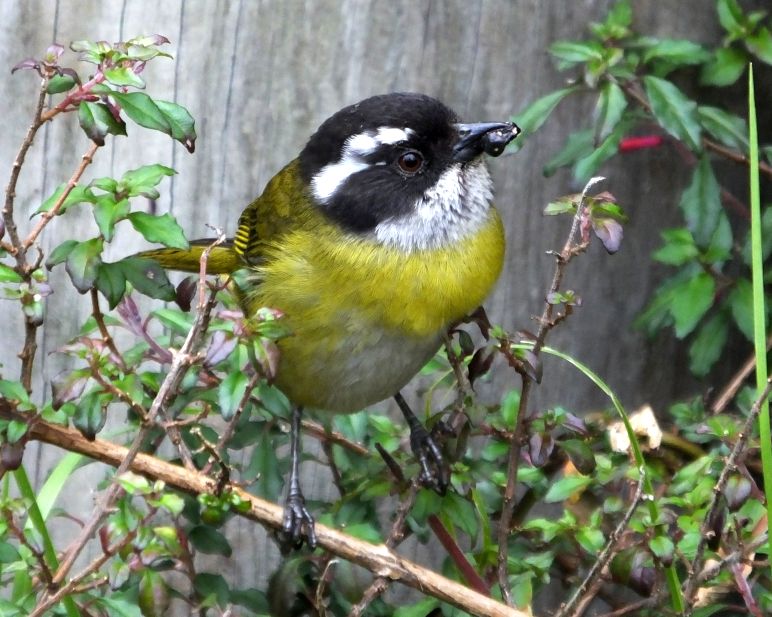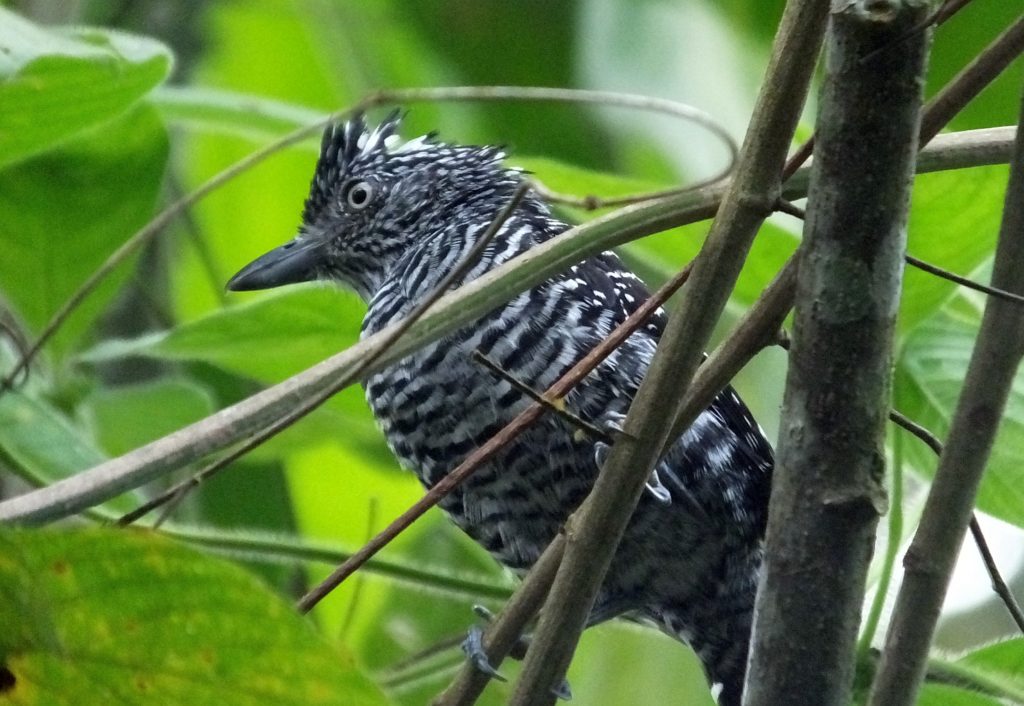I would much rather be outside. I know that echoes how most of us feel but it’s still worth mentioning. It would be nice to be up there in the mossy forests of the mountains visible through the back window. Up there, almost within reach, groups of chattering Sooty-capped Bush-tanagers mix it up with Flame-throated Warblers, Yellow-winged Vireos, and other birds that evolved to play avian roles in the unique montane habitats of southern Central America.

Right now, at the start of the breeding season, the woods up on Poas and Barva are haunted by the fairy songs of Black-faced Solitaires, the healing rhythms of Mountain Thrushes and the cheerful tune of gnomish Gray-breasted Wood-wrens. With luck and knowing where to look, you could certainly see a Resplendent Quetzal, have close views of Black-and-yellow Silky-Flycatchers feasting on berries, might even find a reclusive, rare Costa Rican Pygmy-Owl.

Take my mind over that mountain and I fly over a lush canopy of cloud forest grading into lowland rainforest, accompanied all the way by a few hundred bird species. Flocks of glittering, chipping tanagers, woodcreepers whistling from the ravines, Toucans perched up high, an Ornate Hawk-Eagle giving a lethal warning as it whistles while soaring in the misty surroundings.
If we only lived closer to that mountain, we might see some of those birds from the window. But it’s not a complete loss, I can’t, I won’t complain about our window birding because it’s always good. At least we have a window to watch from, in complete gratitude I can say that we are healthy at this moment and there are birds. We hear a Crested Bobwhite call every morning. It sounds so close, we suspect it might even be hiding in the tall grass just across the street. I haven’t seen it yet, perhaps my scanning hasn’t been careful enough.

Grayish Saltators, Clay-colored Thrushes, and Yellow-green Vireos are always singing and many other avian possibilities keep me looking out the windows both back and front. Today, just before lunch, an Eastern Kingbird was perched on a high branch,waiting out the rain on its long journey north. Where will it go? Could be anywhere, could be a field in northeastern Pennsylvania where a much younger version of myself did some window watching from my aunt and uncle’s place. Fred and Chris, they lived in a small two story place, the back windows overlooked a wet meadow and small marsh that bordered woods that went up and over the surrounding hills. Rose-breasted Grosbeaks, Scarlet Tanagers and other eastern woodland birds would frequent trees just outside the window.
I used to watch the birds that came to the windows, scan the hillside, and become absorbed by the fantastic beauty of summer in the woods of Pennsylvania. “Dreams” by Fleetwood Mac was the perfect auditory accompaniment. A lazy, drifting ride, it fit the timeless view.
Scanning a clearing on the hillside, I had always hoped to see a bear. I saw plenty of deer wagging their tales as they walked down through a clearing but never a bear even though they did live in those woods. But there were other birds too; flyby Great Blue Herons, Belted Kingfishers, and raptors. Other birds perched down below where I had seen my lifer Yellow-throated Vireo, Ruby-throated Hummingbird, and other species. That was in 1983.
In 2020 Costa Rica, I look out the window and during the winter months, we have those same species of vireo, hummingbird, and grosbeak. They left a few weeks ago but there are other backyard birds to look for; Yellow-green Vireos, kiskadees, and Masked Tityras to ponder over. Watching the Red-billed Pigeon power through the sky, the extra fast swifts cut through the air and the Hoffmann’s Woodpeckers calling from bare trees will act as practice for when we can walk trails in wilder habitats, go to the places where the umbrellabirds, ground-cuckoos, and large raptors live over on the other side of the mountain.
























